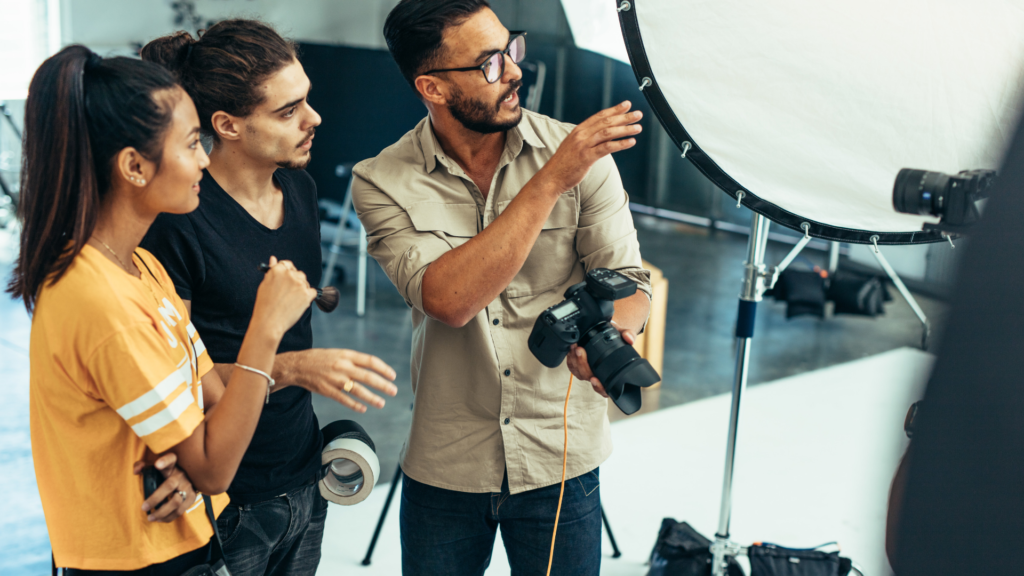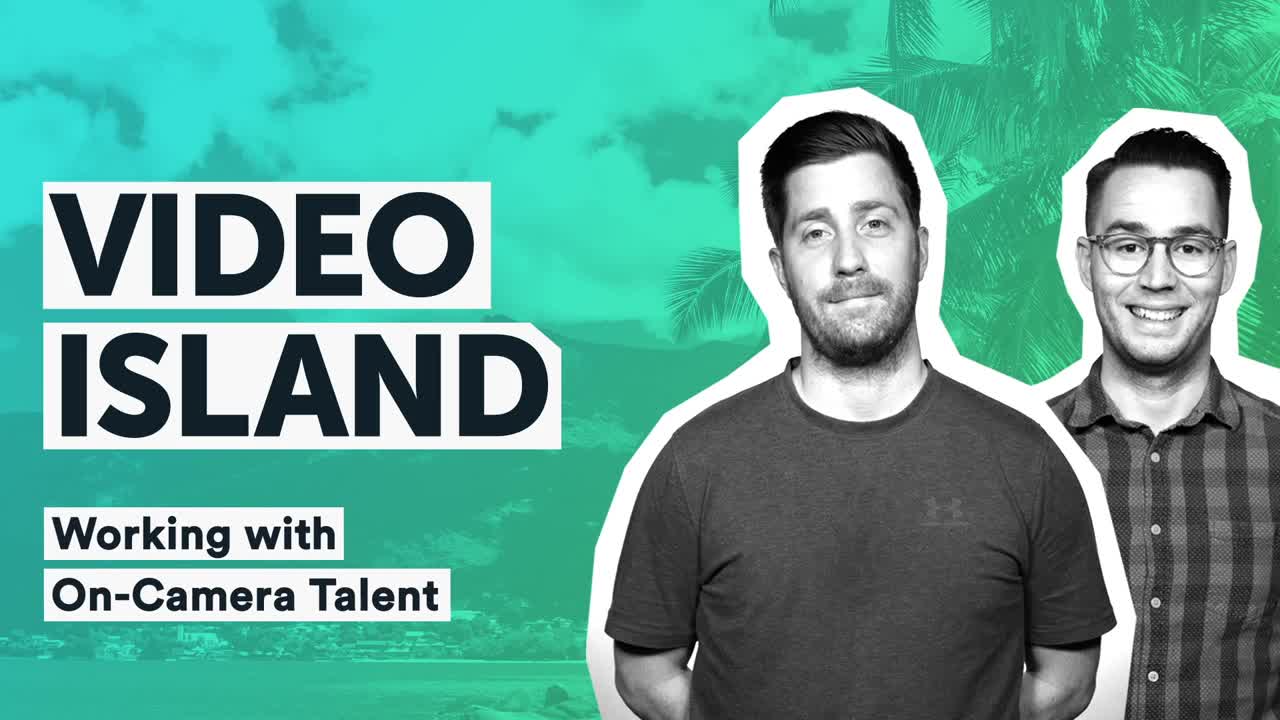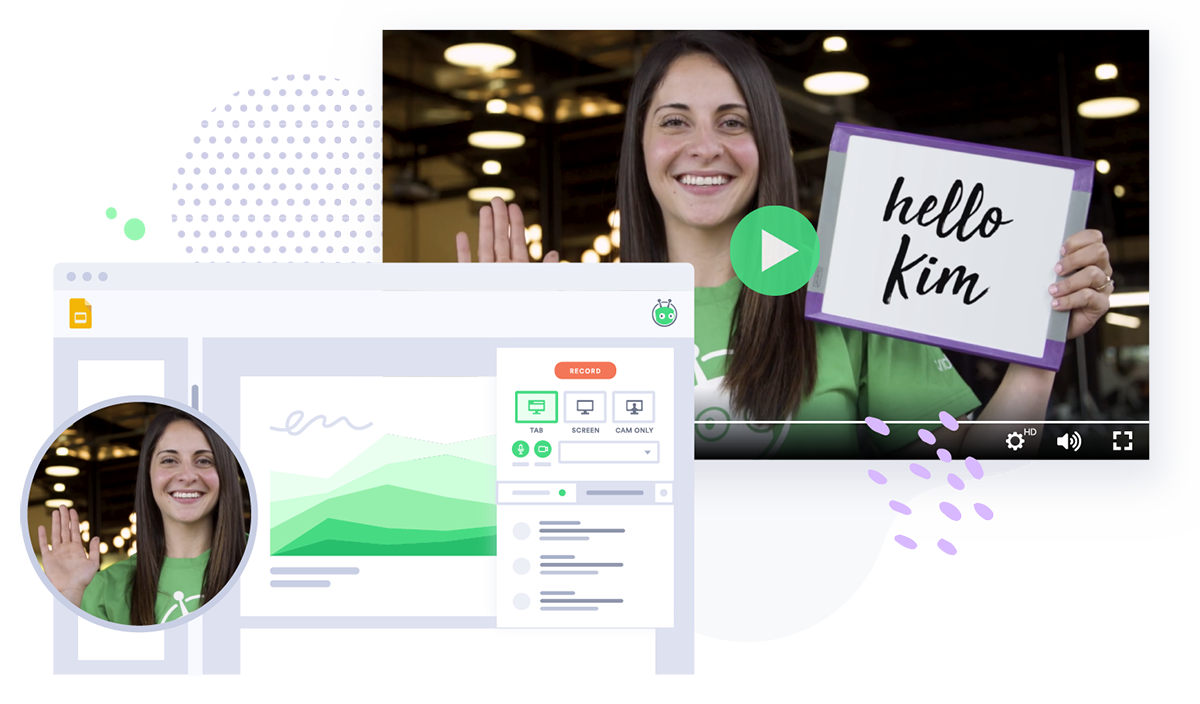Top 5 Tips for Directing Actors and On-Screen Talent
July 22, 2019
Between the comfy chairs and the Oscars acceptance speeches, directing seems like the coolest gig around. But in reality, directing actors for film and video is hard work. Working with actors takes discipline, strong leadership, flexibility, and a positive attitude.
Our video experts Blake Smith and Mathew King have years of experience directing on-screen talent here at Vidyard, and although they still have lots to learn, they’ve offered up some in-depth advice on the Video Island Podcast.


 The Video Island Podcast answers all of your questions about making great videos, from pre to post production. Listen Now
The Video Island Podcast answers all of your questions about making great videos, from pre to post production. Listen Now If you’re about to make your directorial debut, read on for five useful tips for directing actors, and non-actors too!
1. Be Prepared
Just like Scouts or Girl Guides, “be prepared” is the number one rule to planning a video shoot. Besides making sure you’ve covered all the pre-production basics, it’s important that you know your material.
As the director, people will look to you for authority and leadership, so first thing’s first, research your topic well in advance. Talk to experts, catch up on the latest news, and know your material.
By the time your talent arrives on set, you’ll be equipped to answer all their questions, provide context, and be better informed to rework the material on the fly. If you’re working with an interview format, you may have to rephrase questions or elaborate on the information you’re trying to extract. It’s going to be a lot easier to do that if you actually know what you’re talking about.
The same rule applies when preparing your physical space:
- Set up all the gear with your crew before actors even step foot on set so they aren’t distracted by the technical aspects of the environment
- Use stand-ins during lighting set up so your actors aren’t already hot and tired before they start
- Have water and snacks available so that no one has to interrupt the workflow by leaving the space
2. Plan Ahead
Whether you’re directing a scripted production or a loosely organized interview, having a plan for the shoot will cut down on wasted time. Prepare a script or list of questions and let it guide the process.
If you’re working with a script, actors will need to see it well in advance. Make sure to deliver it far enough ahead to leave lots of time for questions before the shoot day. Better yet, plan to hold a table read—where actors read through the script with the direct and other creative leads—at least one day before the shoot. It’s a great way to rehearse and get all the questions out of the way before the cameras start rolling.
In the case of an interview format, there is some debate (even among our video experts!) about whether or not to share interview questions with your subject ahead of time.
On the one hand, you give the interviewee an opportunity to prepare and feel comfortable with the material. This is especially helpful when directing non-actors or people unused to being on camera (like your coworkers).
On the other hand, too much time to prepare can result in a scripted or robotic delivery on camera. In an interview format, there’s nothing worse or more inauthentic than a scripted response. Mathew King, Video Production Manager at Vidyard, advises his interviewees not to prepare fully scripted answers because “more often than not, people can tell that you’re looking off to the side of the camera and it looks really amateur”—so don’t even think about using cue cards!
The happy solution to this debate is to give your subject an overview of the questions you’ll be asking, but leave out the details. If you think you’ll want your subject to provide specific stats, then absolutely ask for those ahead of time. Otherwise, stick to a topical overview. Your subject is being interviewed for a reason. They’re the expert. The more you convince them of that, the more comfortable they’ll be on camera.
Having the interview questions or script to guide your shoot will help you plan your time, and lead with confidence.
3. Establish a Protocol with Your Crew
There are few things worse for an actor than receiving conflicting information. Direction should come from you and no one else.
To avoid any confusion on the day, be sure to talk to your crew ahead of time to establish a protocol for giving feedback. For example, if your actor is on a roll, giving a fantastic description of what their company does, it would be a shame if your camera operator interrupted to tell them to stop looking directly at the camera. You could have used the audio recording and put it over some B-roll later! Also, now the actor is probably going to be way more concerned about where they’re looking than what they’re talking about.
As the director, you’re the filter between the performance and the technical, and to do that Mat says, “You have to be able to multitask and edit in your head.”
In order to get the best performance, an actor should see and hear as little as possible about the technical aspects of the shoot. Any conversations you have with your crew about lighting, shooting order, set up changes, etc. should never distract the actor from their performance.
4. Be Flexible!
Nothing goes according to plan, so remember the first tip and be prepared to make changes on the fly. Unless you’re working with Meryl Streep, don’t expect your actor to be a one-take wonder. Your talent will be more at ease when you accept the bad takes in stride.
If you’re interviewing, be prepared to circle back to a question. As Mat says, “You can always come back to that question later on once they’re a little bit more comfortable with some of the softer questions. When they feel like more of a professional and more comfortable, you can come back to that question and suddenly, more often than not, you’ll find that they’re able to easily answer that question for you.”
Plan time to mess up! Why do you think restaurant hosts always over-quote people on the wait time? It manages expectations. Planning extra time into your shoot gives you a buffer if you need it and, if you don’t, everyone leaves pleasantly surprised at how quick and easy everything was.
Be sure to get “one for safety,” even if you’re confident you got the shot, because an extra take will give you more choices during editing. Phrasing it this way will also relax the actors because it implies their work is already done. Some of the best performances come out on the safety shot if you’re willing to be flexible and explore creative alternatives.
5. Set the Tone!
As their director and guide, actors will be very attentive to your mood and tone. Even if everything is going wrong (and sometimes it will), it’s important to keep a brave face. If you don’t, that worry will be visible on screen. Instead, always lead with positivity.
One thing that our video experts always start with is making the actor or interviewee comfortable. This can be as easy as chatting with them about something personal or off-topic before you get down to work.
Getting them to speak freely for a few minutes without worrying about lines or delivery is often enough to relax the actor for the beginning of the shoot. As they start to deliver lines or answer questions, it’s up to you to notice their pace and tone, and always bring it back to a natural state. (If only Tommy Wiseau paid more attention to pacing in The Room! See what I mean in the infamous flower shop scene.)
If an interviewee sounds robotic while delivering a memorized answer, you can try asking them to slow down, or to explain it to you like a friend.
If you sense the energy has dipped, get the ya ya’s out! A classic move is to tell the actor to do a take as “big” (or ridiculously) as they can. Feel free to get silly and give an example. Shout and jump around. This will instantly lift the mood so that the next take, while not as ridiculous, will carry some of that renewed energy.
If you’re great to work with, more projects and more talent will come your way. If you’re working for a company, word will spread around the office about how much fun it is to shoot a video with you, and you won’t have to beg people to be on camera.
Never miss an episode of the Video Island Podcast—Subscribe Now!
Apple Podcast – https://apple.co/2XscFSd
GooglePlay – http://bit.ly/2Xscpmd
Spotify – https://spoti.fi/2XuKLop
Stitcher – http://bit.ly/2XuzPaw



